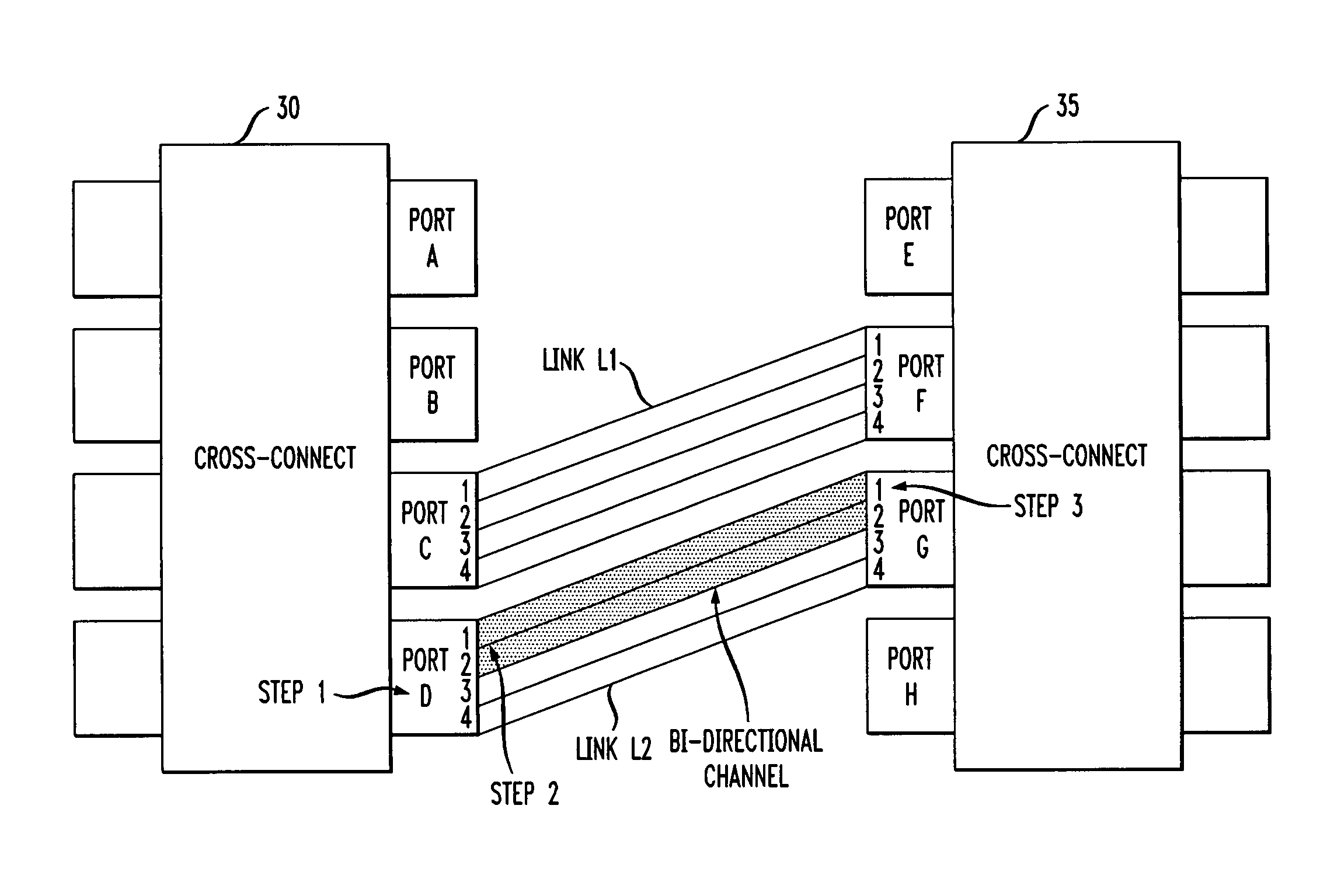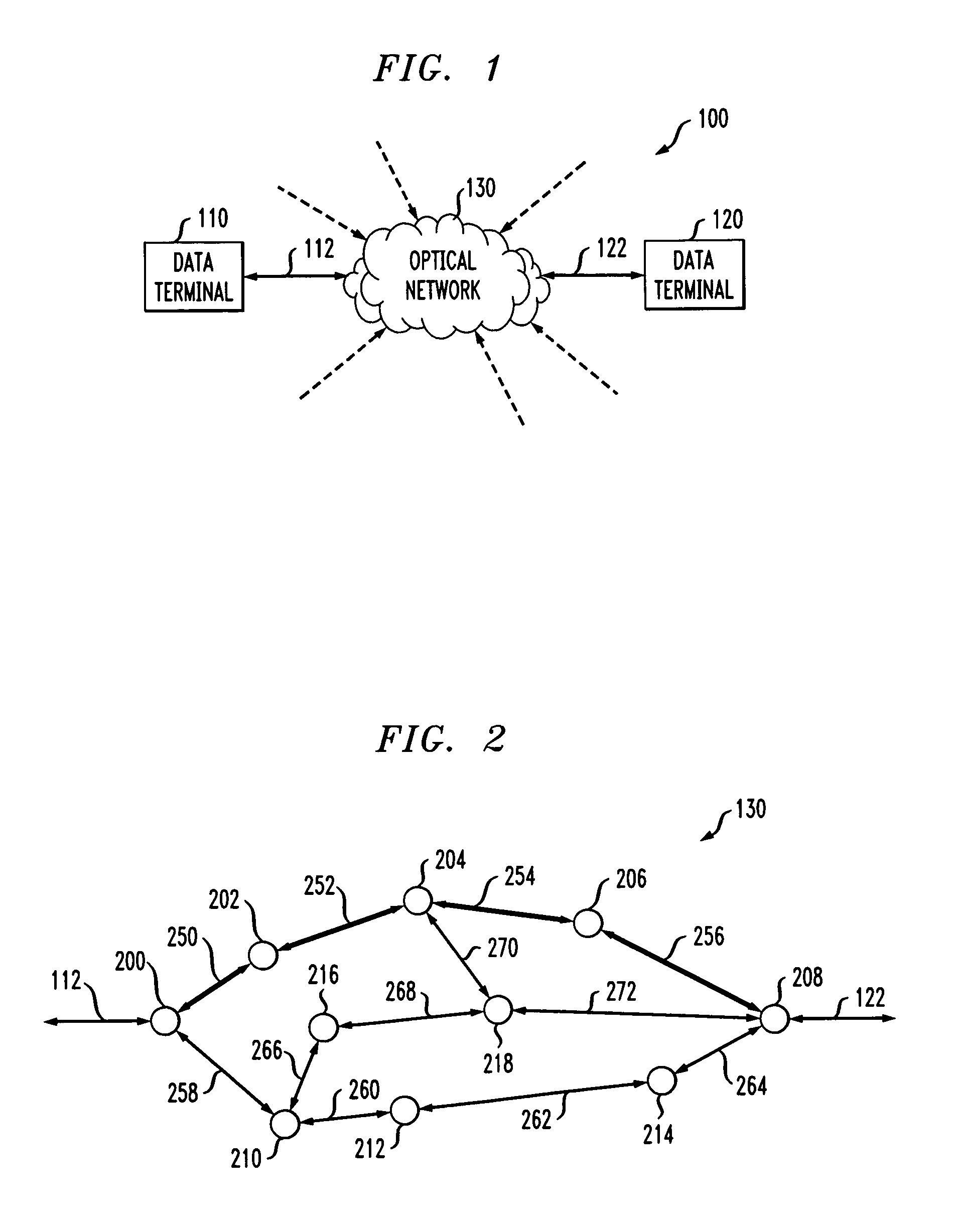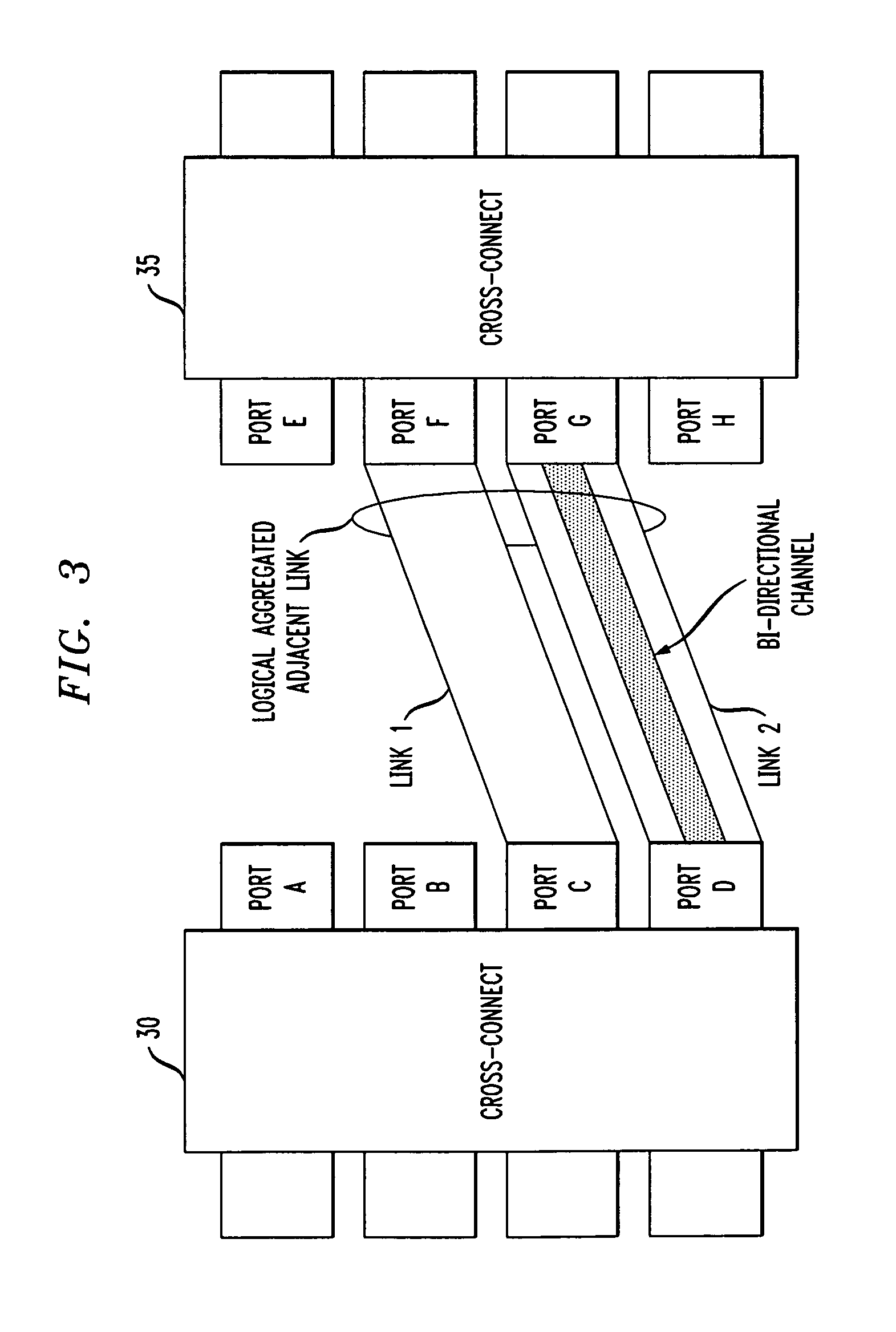Link selection schemes for avoiding channel contention
a channel contention and link selection technology, applied in the field of link selection schemes, can solve the problems of large amount of time likely to be consumed in resolving, and the time requirements for setting up paths during a restoration procedure are not likely to be met, so as to reduce fragmentation and reduce glare
- Summary
- Abstract
- Description
- Claims
- Application Information
AI Technical Summary
Benefits of technology
Problems solved by technology
Method used
Image
Examples
Embodiment Construction
[0025]FIG. 1 shows an exemplary block diagram of a communication system 100. Communication system 100 includes a first endpoint—illustratively a data terminal 110—connected to an optical mesh network 130 through a first data link 112, and a second endpoint—illustratively a data terminal 120—connected to the optical mesh network 130 through a second data link 122. The optical mesh network 130 supports communication between the first data terminal 110 and the second data terminal 120 by providing an internal communication path capable of transmitting and receiving communication signals over links 112 and 122.
[0026]The data terminals 110 and 120 can be any one of a number of different types of devices, such as computers, routers, SONET terminals, ATM switches, cellular phones, satellites, storage devices, or any combination of software and hardware capable of a) generating, relaying or recalling from storage any information capable of being transmitted to the optical mesh network 130, ...
PUM
 Login to View More
Login to View More Abstract
Description
Claims
Application Information
 Login to View More
Login to View More - R&D
- Intellectual Property
- Life Sciences
- Materials
- Tech Scout
- Unparalleled Data Quality
- Higher Quality Content
- 60% Fewer Hallucinations
Browse by: Latest US Patents, China's latest patents, Technical Efficacy Thesaurus, Application Domain, Technology Topic, Popular Technical Reports.
© 2025 PatSnap. All rights reserved.Legal|Privacy policy|Modern Slavery Act Transparency Statement|Sitemap|About US| Contact US: help@patsnap.com



